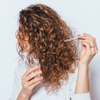
Hair Bonding and Repairing: Everything You Need to Know for Healthier, Stronger Hair
, by Beauty Ship To You, 6 min reading time

, by Beauty Ship To You, 6 min reading time
Hair damage is something we all deal with at some point. Whether it’s from heat styling, coloring, or environmental factors, our hair can become weak, brittle, and prone to breakage. Thankfully, advancements in hair care have introduced solutions that not only help to repair but also bond your hair back together, strengthening and revitalizing it from the inside out.
Hair damage is something we all deal with at some point. Whether it’s from heat styling, coloring, or environmental factors, our hair can become weak, brittle, and prone to breakage. Thankfully, advancements in hair care have introduced solutions that not only help to repair but also bond your hair back together, strengthening and revitalizing it from the inside out.
In this blog, we’ll explore the concepts of hair bonding and repairing, why they’re important, and the best treatments and practices to restore your hair to its healthiest state.
Hair bonding is a process that focuses on repairing broken bonds within the hair structure. These bonds—specifically disulfide bonds—are responsible for holding the hair’s proteins together and giving it strength and structure. When hair is damaged, these bonds break, resulting in weak, brittle hair that is more prone to damage.
Bonding treatments are designed to target these broken bonds, repairing and restoring their integrity. This process helps to rebuild the hair’s strength, resilience, and elasticity, making it less likely to break or become damaged in the future.
Several factors contribute to the breakage of hair bonds:
Hair repairing, on the other hand, refers to the process of restoring and rejuvenating damaged hair. Unlike hair bonding, which focuses primarily on the structural bonds, hair repair includes a combination of deep conditioning, moisturizing, and restoring nutrients that the hair has lost. It aims to hydrate and nourish the hair, improve its texture, and restore its shine.
Repairing treatments typically involve ingredients like:
Both hair bonding and repairing come with numerous benefits:
Olaplex is perhaps the most well-known name in hair bonding treatments. Its patented technology works by reconnecting the broken disulfide bonds in the hair, effectively repairing damage from chemical treatments, heat styling, and environmental factors. The Olaplex system includes a range of products, but the No. 1 and No. 2 treatments are typically done in-salon and work to rebuild hair bonds while strengthening the hair. Olaplex No. 3 is a take-home treatment that continues the repair process at home.
K18 uses a patented bioactive peptide that works on a molecular level to reconnect broken keratin chains in the hair. This treatment has gained popularity for its ability to instantly repair damaged hair in just a few minutes, offering results that can last for up to 4-6 weeks. The formula penetrates deep into the hair cortex, repairing damage and restoring the hair’s natural strength.
The Brazilian Bond Builder is commonly used in salons during chemical treatments like coloring or straightening. It protects and repairs hair by rebuilding the disulfide bonds during and after the treatment. It’s known for leaving hair looking smoother, shinier, and healthier after chemical processes.
Redken’s pH-Bonder works to protect the hair’s bonds during and after color services. It helps to prevent breakage by balancing the pH of the hair and reinforcing the hair’s structure.
Regularly using deep conditioning masks can do wonders for damaged hair. These masks are packed with nourishing ingredients that help hydrate, repair, and restore the hair. Look for masks that contain proteins and oils like keratin, argan oil, or jojoba oil.
Leave-in conditioners are a great way to maintain moisture and repair hair throughout the day. They help to detangle, reduce frizz, and prevent further damage by providing ongoing hydration.
Hair oils like argan oil, coconut oil, and jojoba oil are rich in nutrients that hydrate and repair hair. They are particularly beneficial for dry or damaged hair, adding shine and smoothness. Applying a small amount of oil to the ends of your hair can help to seal in moisture and protect against breakage.
For hair that has been severely damaged by heat or chemical treatments, protein treatments can help replenish the protein that has been lost. These treatments fortify the hair shaft and promote stronger, healthier hair. However, be cautious not to overuse protein treatments, as too much protein can lead to hair becoming stiff and brittle.
Hair bonding and repairing are essential treatments for anyone struggling with damaged or weakened hair. Whether you opt for professional treatments like Olaplex or K18, or incorporate deep conditioning masks and nourishing oils into your routine, restoring your hair’s health is possible. By understanding the causes of hair damage and using the right products, you can rebuild your hair’s strength, resilience, and shine, leading to healthier, more vibrant hair in the long run. Products found at Beauty Ship To You.
Remember, hair care is a journey, not a one-time fix. Consistency and proper maintenance are key to keeping your hair in its best shape for years to come.
Written By Beauty Ship To You